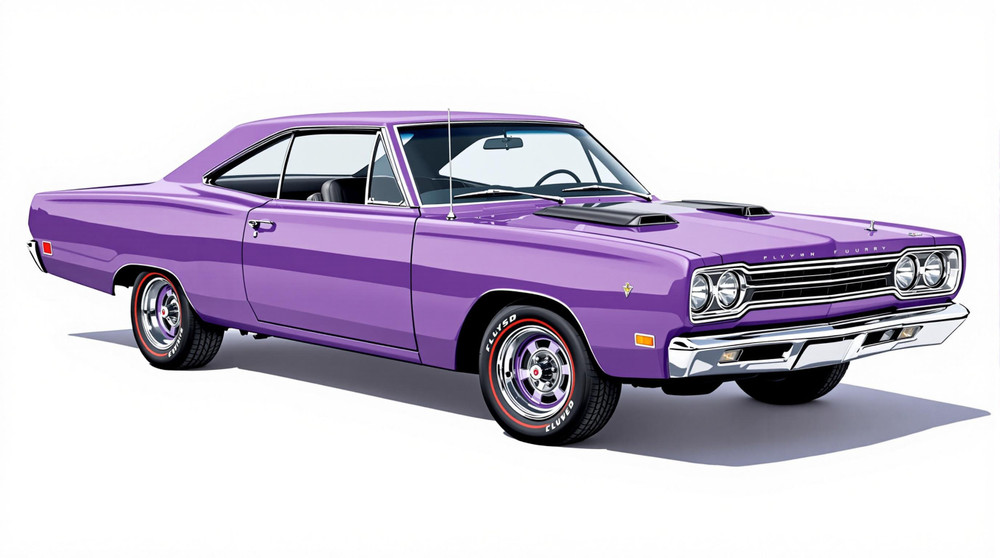Image of 1969 Plymouth Fury, Note: These illustrations use artistic license and may differ from actual historical models.
Performance Metrics
Fundamental Metrics
Emotional Appeal
MMP Rating
| Engine Specifications | |
|---|---|
| Engine: | 225 cu in (3.7 L) Slant-6, 318 cu in (5.2 L) LA V8, 383 cu in (6.3 L) B V8, 440 cu in (7.2 L) RB V8 |
| Displacement: | 225-440 cu in |
| Horsepower: | 145-375 hp |
| Torque: | 215-480 lb-ft |
| Compression Ratio: | 8.4:1 - 10.1:1 |
| Ignition System: | Conventional breaker-point ignition system |
| Cooling System: | Liquid-cooled |
| Performance Specifications | |
| 0-60 Time: | 7-10 seconds |
| 1/4 Mile Time: | 15-18 seconds |
| Top Speed: | 120-130 mph |
| Transmission and Drive | |
| Drive Type: | Rear-wheel drive |
| Transmission Type: | 3-speed manual, 4-speed manual, 3-speed TorqueFlite automatic |
| Fuel and Efficiency | |
| Fuel System Type: | Carburetor |
| MPG: | 10-15 mpg |
| Dimensions and Brakes | |
| Brakes: | Front disc brakes and rear drum brakes |
| Wheelbase: | 120 inches |
| Weight: | 3,500-4,000 lbs |
Note: Specifications for classic cars are given to the best of our ability, considering the limited and variant data available.
Introduction
The year 1969 marked a pinnacle in American automotive design, and at the forefront of this era stood the Plymouth Fury, a car that captured the essence of freedom and power. Born from the ambitious minds at Chrysler Corporation's Plymouth division, the Fury was designed to offer both performance and luxury. It was a product of its time, reflecting the boldness of late 60s America, with a unique fact that sets it apart: it was one of the few cars to be offered in virtually every body style imaginable—from sedans to convertibles.
Design and Innovation
The 1969 Plymouth Fury boasted an exterior that exuded confidence with its long lines and muscular stance. Its design featured a prominent grille and squared-off front-end that commanded attention on the road. The interior was equally impressive, with high-quality materials and attention to detail that provided a sense of luxury uncommon in many cars of its class. Technological features like optional air conditioning and AM/FM radios were considered cutting-edge for the time. Color options ranged from subdued to vibrant, with hues like 'Jamaica Blue' and 'Sunfire Yellow' being popular choices among enthusiasts. The Fury was available in several body styles including two-door coupes, four-door sedans, convertibles, and even station wagons, with the convertible often hailed as the most iconic.
Historical Significance
The 1969 Plymouth Fury made an indelible mark on automotive history through its blend of style, comfort, and performance. It set itself apart from contemporaries with its wide range of body styles and trim levels, offering something for everyone. This versatility helped cement its place in automotive lore and influenced future generations of cars that sought to provide a similar breadth of choice.
Performance and Handling
The Fury's performance was nothing short of thrilling for its time, with engine options that included powerful V8s capable of pushing the car to impressive speeds. A top-of-the-line Fury could sprint from 0-60 mph in under 8 seconds—a notable feat for a full-sized sedan of that era. Handling was also commendable; despite its size, the Fury managed bumps with grace and maintained composure on windy roads. Drivers often praised the visceral experience—the rumble of the engine, the solid feel of acceleration, and the responsive steering.
Ownership Experience
Owners used their Furys for various purposes: as reliable daily drivers, weekend show cars, or even as contenders on the drag strip. Maintenance was straightforward by modern standards, making it a favorite among DIY enthusiasts. Reliability was typical for the era; regular upkeep could keep a Fury running strong for years.
Fun Facts
The 1969 Plymouth Fury has been associated with several unique trivia points over time. For instance, certain models were equipped with 'Mod Top' options—vinyl roofs with funky floral patterns—a true testament to '60s style. While some criticized its size during the fuel-conscious years that followed its release, others celebrated it for its unabashed representation of American automotive ambition.
Collector's Information
In today's collector market, a well-maintained 1969 Plymouth Fury can fetch anywhere from $10,000 to $30,000 depending on condition and originality. While production numbers were substantial at the time—making them relatively common compared to low-volume sports cars—the number of surviving examples in excellent condition is limited. The market has seen a gradual appreciation for these vehicles as nostalgia for this era grows stronger.
Conclusion
The 1969 Plymouth Fury stands as a testament to an era when cars were more than just transportation—they were statements about lifestyle and personality. With its distinctive styling, range of options, and powerful performance capabilities, it remains an enduring icon in American automotive history—a classic that continues to captivate enthusiasts around the world.
1969 Plymouth Fury Catalog of Parts
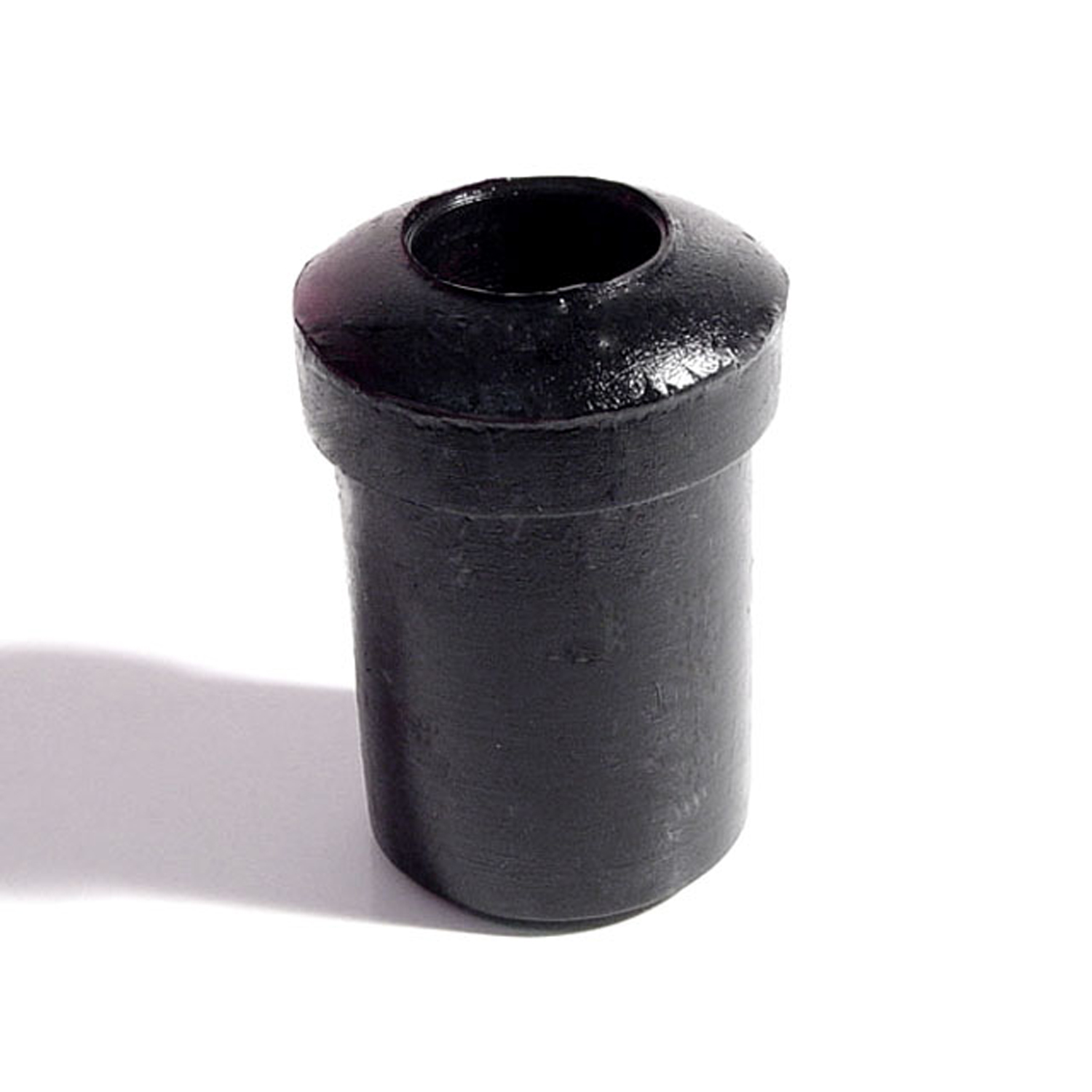 1969 Plymouth Fury Spring and Shackle Bushing. 1" bottom O.D-BN 20Spring and Shackle Bushing. 1" bottom O.D. X 1-5/8" high, with 9/16" I.D. Each
1969 Plymouth Fury Spring and Shackle Bushing. 1" bottom O.D-BN 20Spring and Shackle Bushing. 1" bottom O.D. X 1-5/8" high, with 9/16" I.D. Each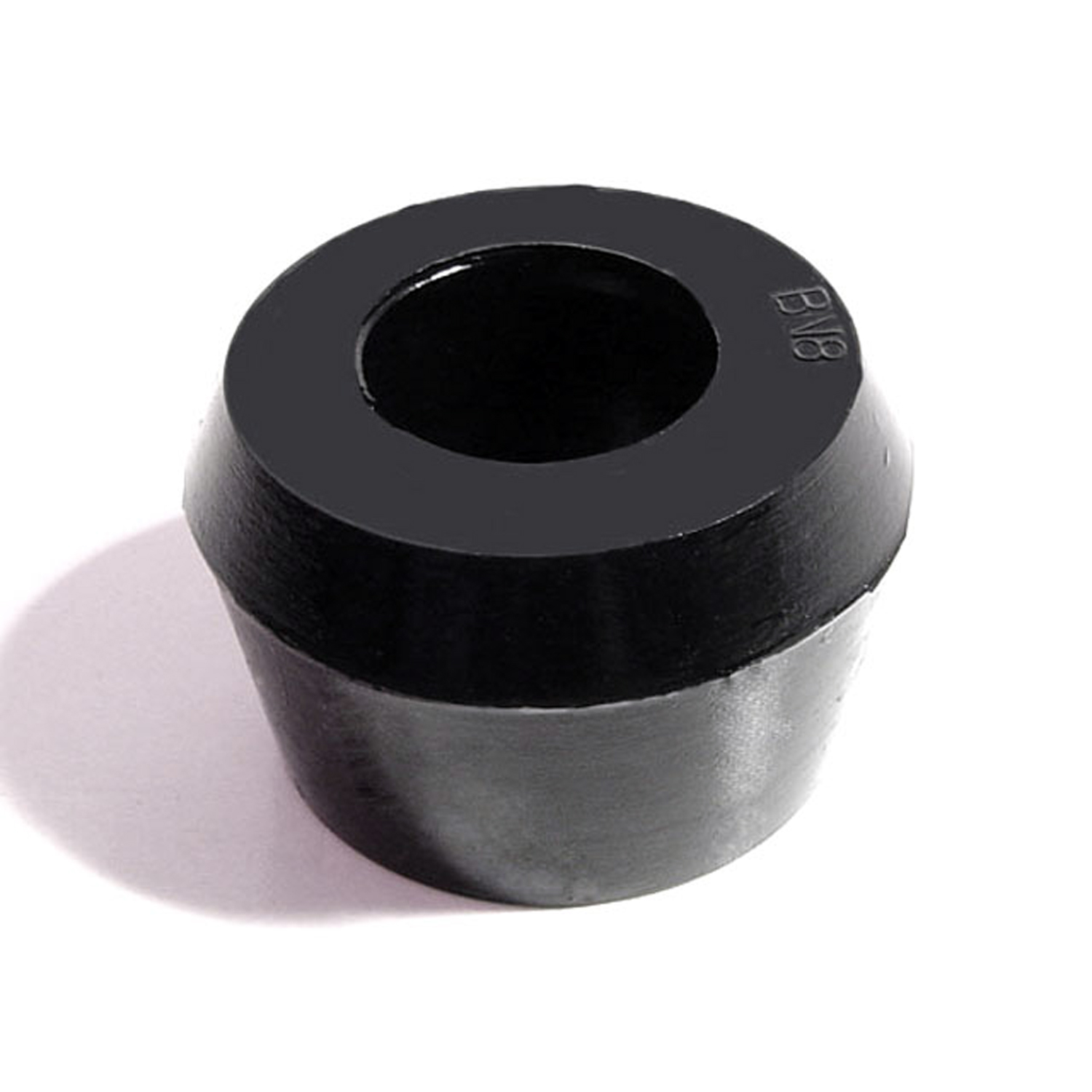 1969 Plymouth Fury Shock Absorber Grommet. 1-1/4" bottom O.D-BN 8Shock Absorber Grommet. 1-1/4" bottom O.D., 1" high, with 3/4" I.D. Each
1969 Plymouth Fury Shock Absorber Grommet. 1-1/4" bottom O.D-BN 8Shock Absorber Grommet. 1-1/4" bottom O.D., 1" high, with 3/4" I.D. Each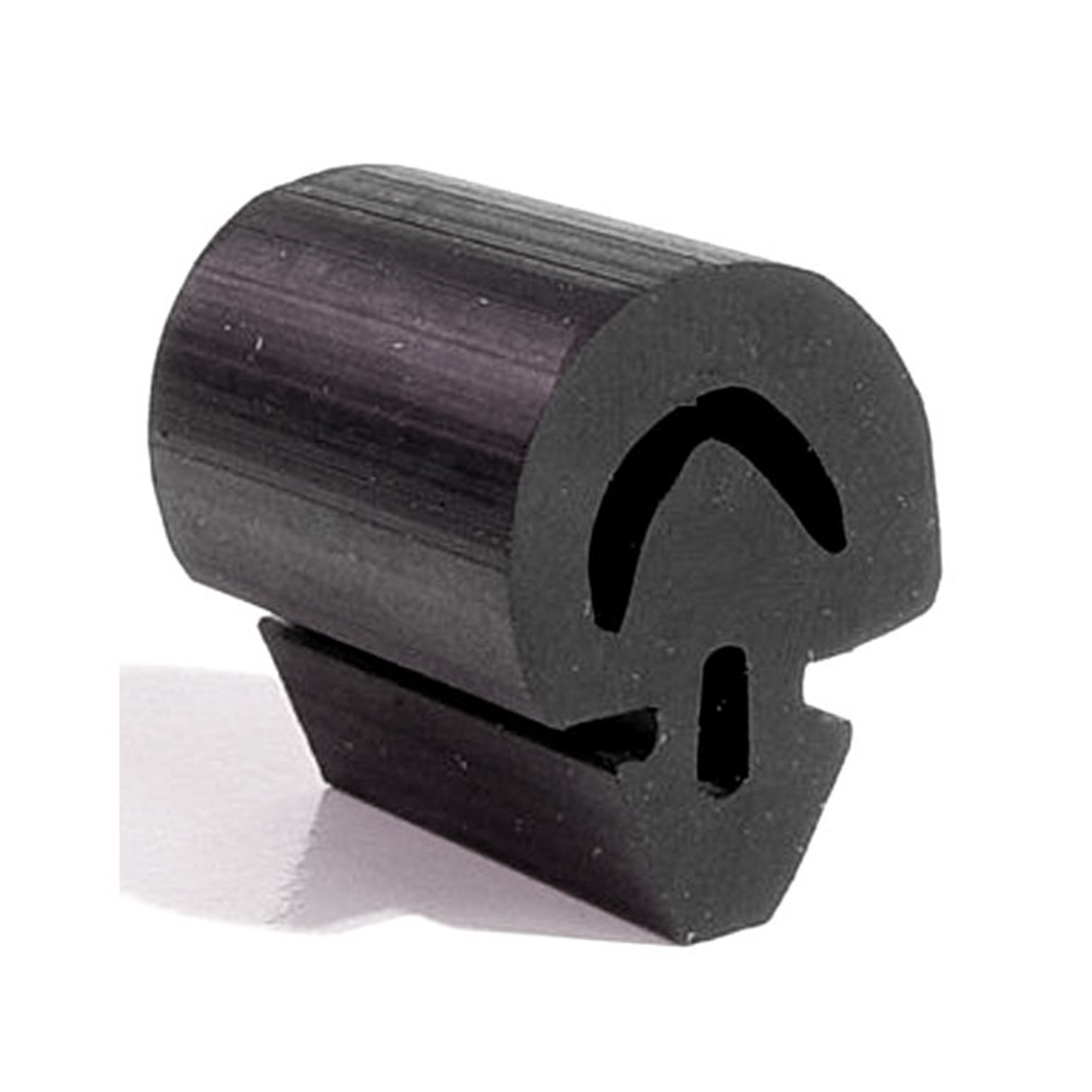 1969 Plymouth Fury Door Bumper. 3/4" high X 1/2" wide X 5/8" long-DB 50-MDoor Bumper. 3/4" high X 1/2" wide X 5/8" long. Four used per car. Each
1969 Plymouth Fury Door Bumper. 3/4" high X 1/2" wide X 5/8" long-DB 50-MDoor Bumper. 3/4" high X 1/2" wide X 5/8" long. Four used per car. Each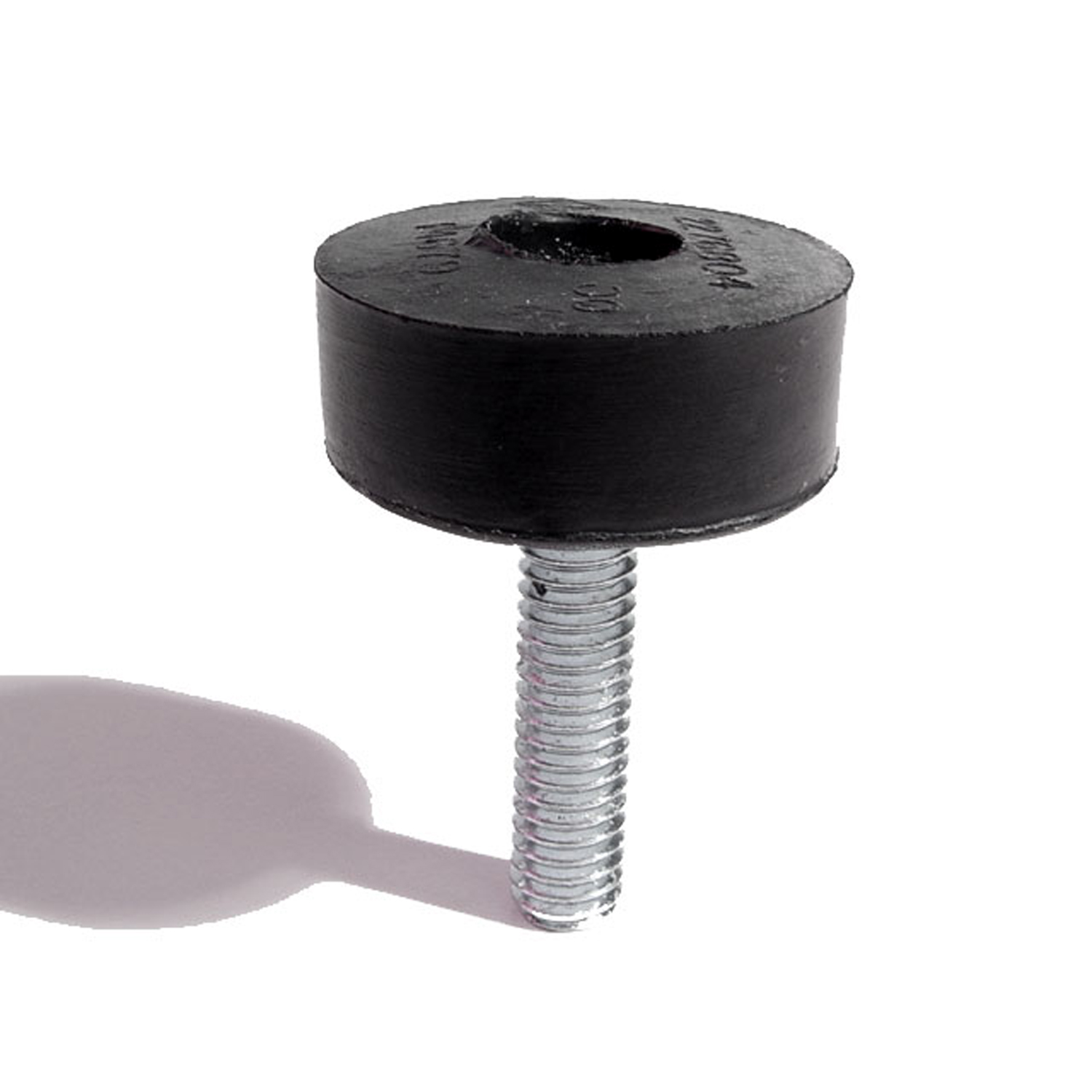 1969 Plymouth Fury Hood Adjustment Bolt and Bumper-HA 8Hood Adjustment Bolt and Bumper. 1-3/16" diameter rubber head. 5/16" thick X 18 threads/inch X 1-1/4" long bolt. Each
1969 Plymouth Fury Hood Adjustment Bolt and Bumper-HA 8Hood Adjustment Bolt and Bumper. 1-3/16" diameter rubber head. 5/16" thick X 18 threads/inch X 1-1/4" long bolt. Each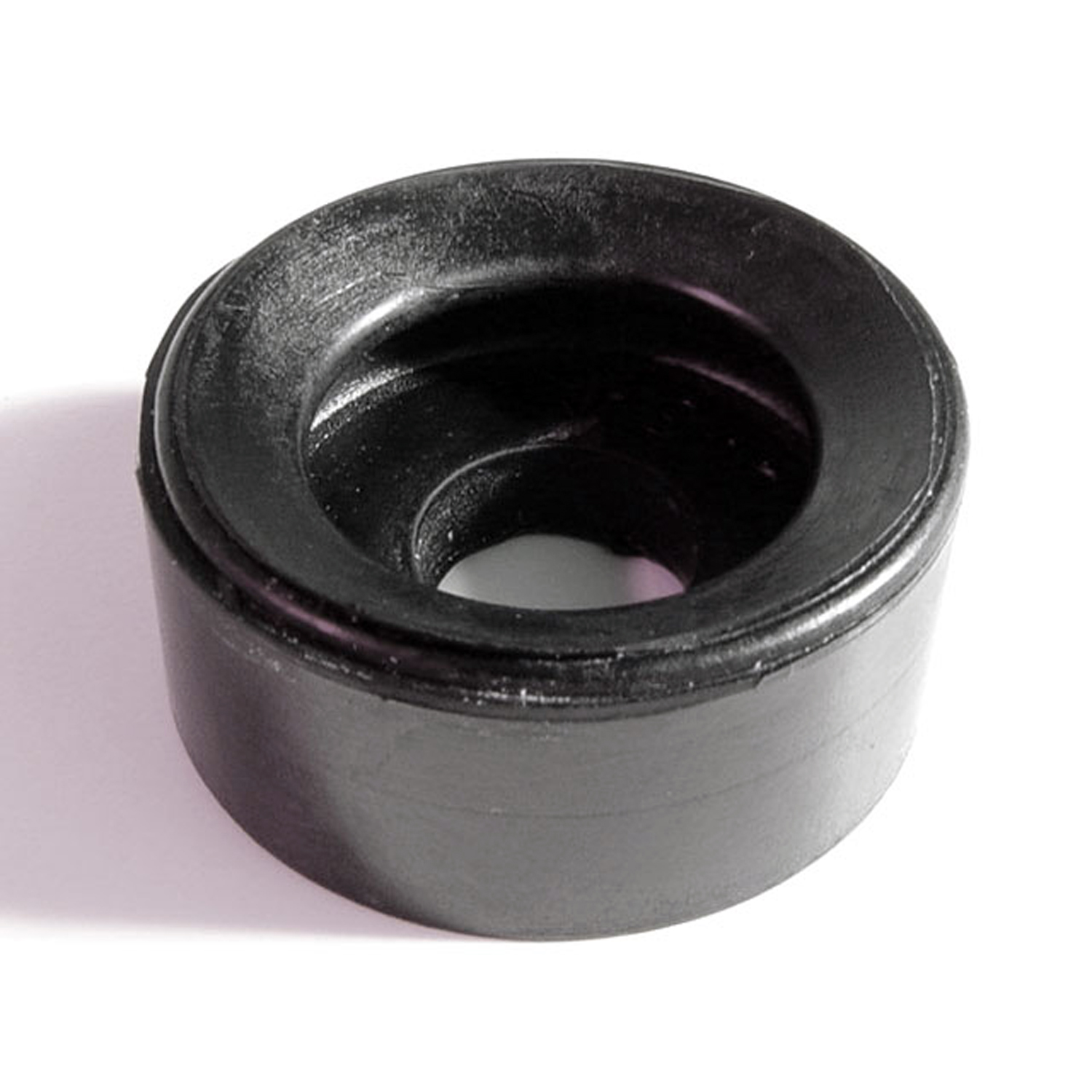 1969 Plymouth Fury Hood Adjustment Bumper. 1-1/4" O.D-HA 8-AHood Adjustment Bumper. 1-1/4" O.D., 3/4" large hole, 7/16" small hole, 1/2" thick. Each
1969 Plymouth Fury Hood Adjustment Bumper. 1-1/4" O.D-HA 8-AHood Adjustment Bumper. 1-1/4" O.D., 3/4" large hole, 7/16" small hole, 1/2" thick. Each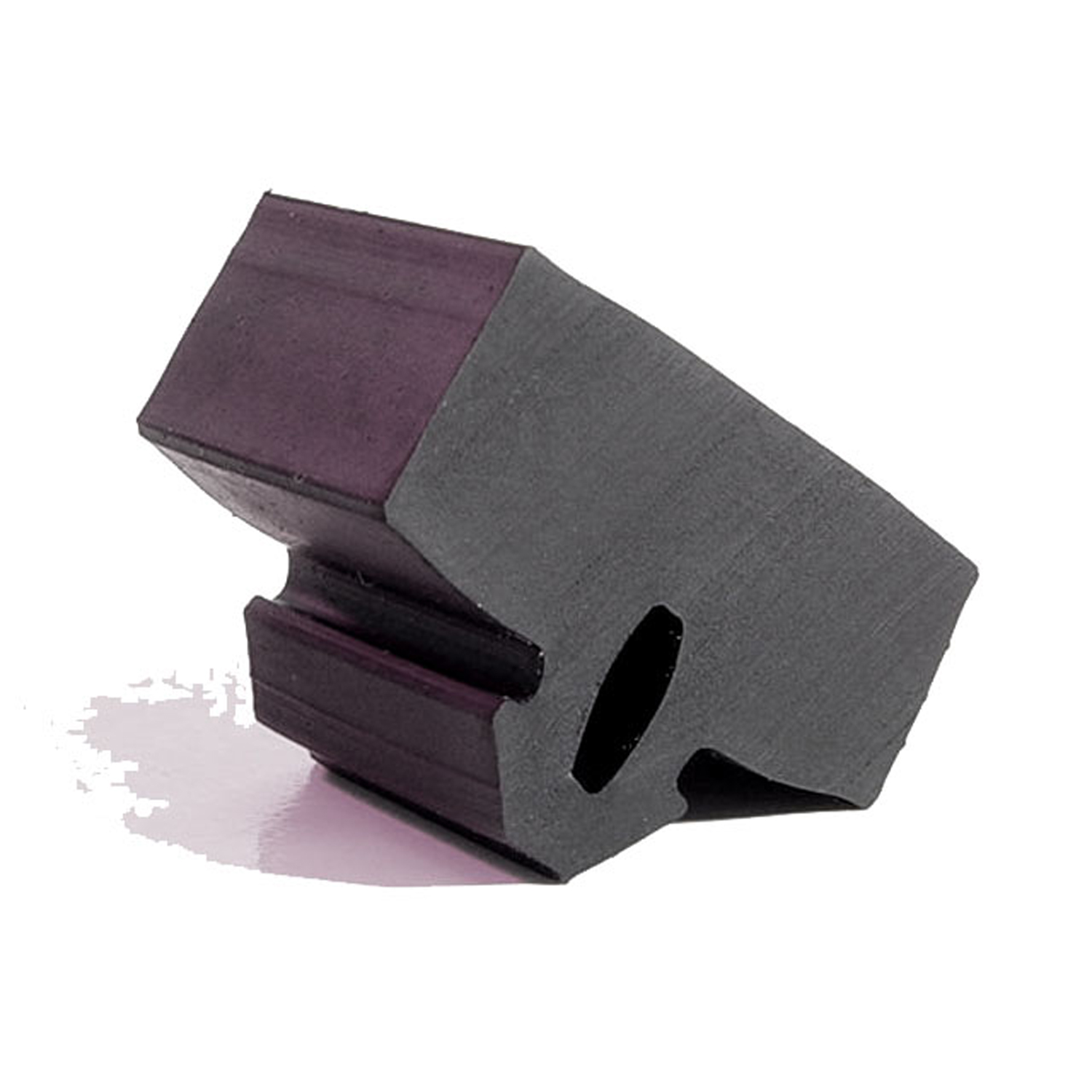 1969 Plymouth Fury Trunk Bumper. Each-HF 62Trunk Bumper. Each
1969 Plymouth Fury Trunk Bumper. Each-HF 62Trunk Bumper. Each 1969 Plymouth Fury Door handle mounting pads. 2-3/8 in. L x 1-1/8 in. L-MP 959-BDoor handle mounting pads. 2-3/8 in. L x 1-1/8 in. L. 4-piece set. R&L.
1969 Plymouth Fury Door handle mounting pads. 2-3/8 in. L x 1-1/8 in. L-MP 959-BDoor handle mounting pads. 2-3/8 in. L x 1-1/8 in. L. 4-piece set. R&L.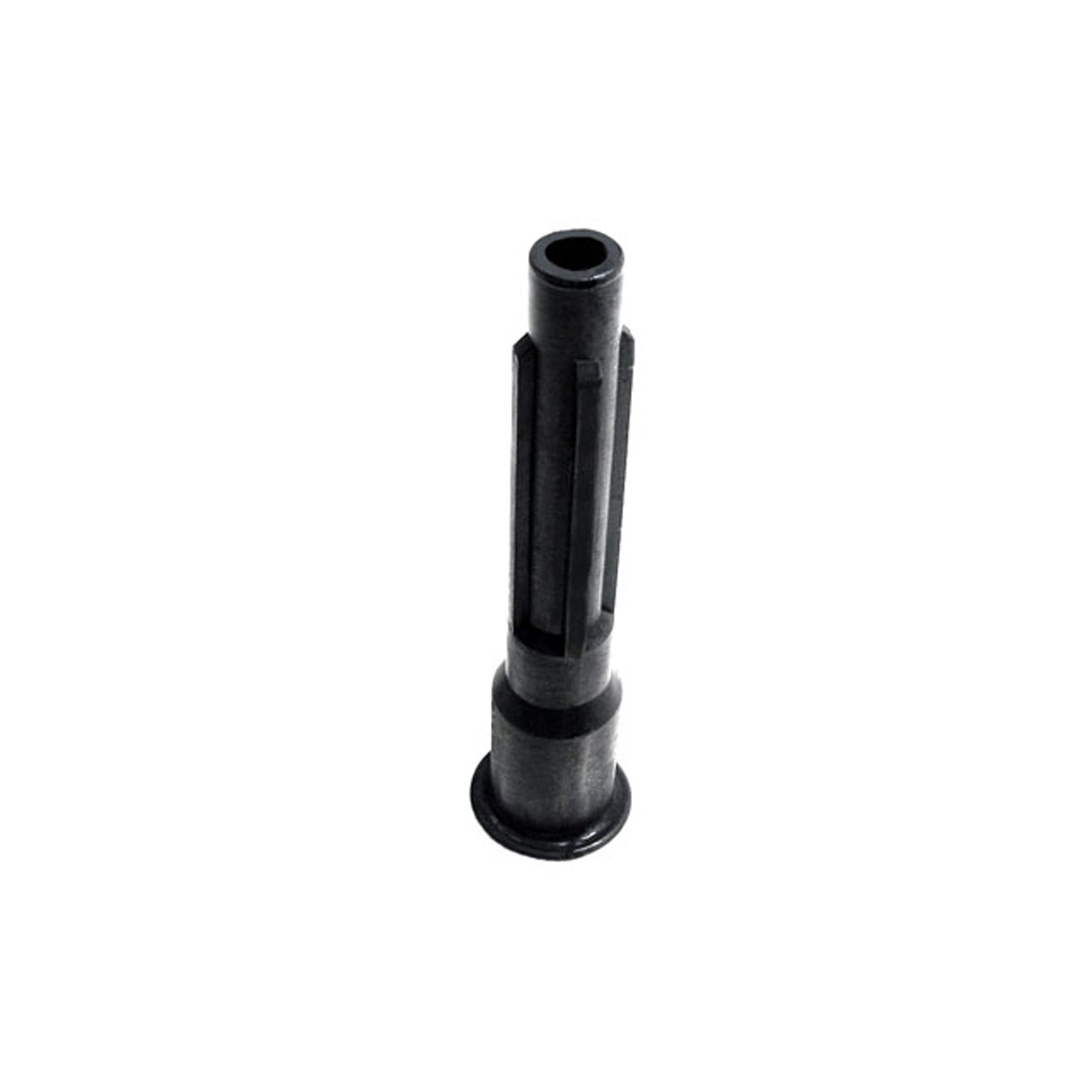 1969 Plymouth Fury Flexible Spark Plug Boot, used on Hemi's with power brakes-RP 1-MFlexible Spark Plug Boot, used on Hemi's with power brakes. 4" long, 5/16" upper i.d., 5/8" lower i.d. Each
1969 Plymouth Fury Flexible Spark Plug Boot, used on Hemi's with power brakes-RP 1-MFlexible Spark Plug Boot, used on Hemi's with power brakes. 4" long, 5/16" upper i.d., 5/8" lower i.d. Each 1969 Plymouth Fury Drain Flap on Cowl. Each-RP 900-ADrain Flap on Cowl. Each
1969 Plymouth Fury Drain Flap on Cowl. Each-RP 900-ADrain Flap on Cowl. Each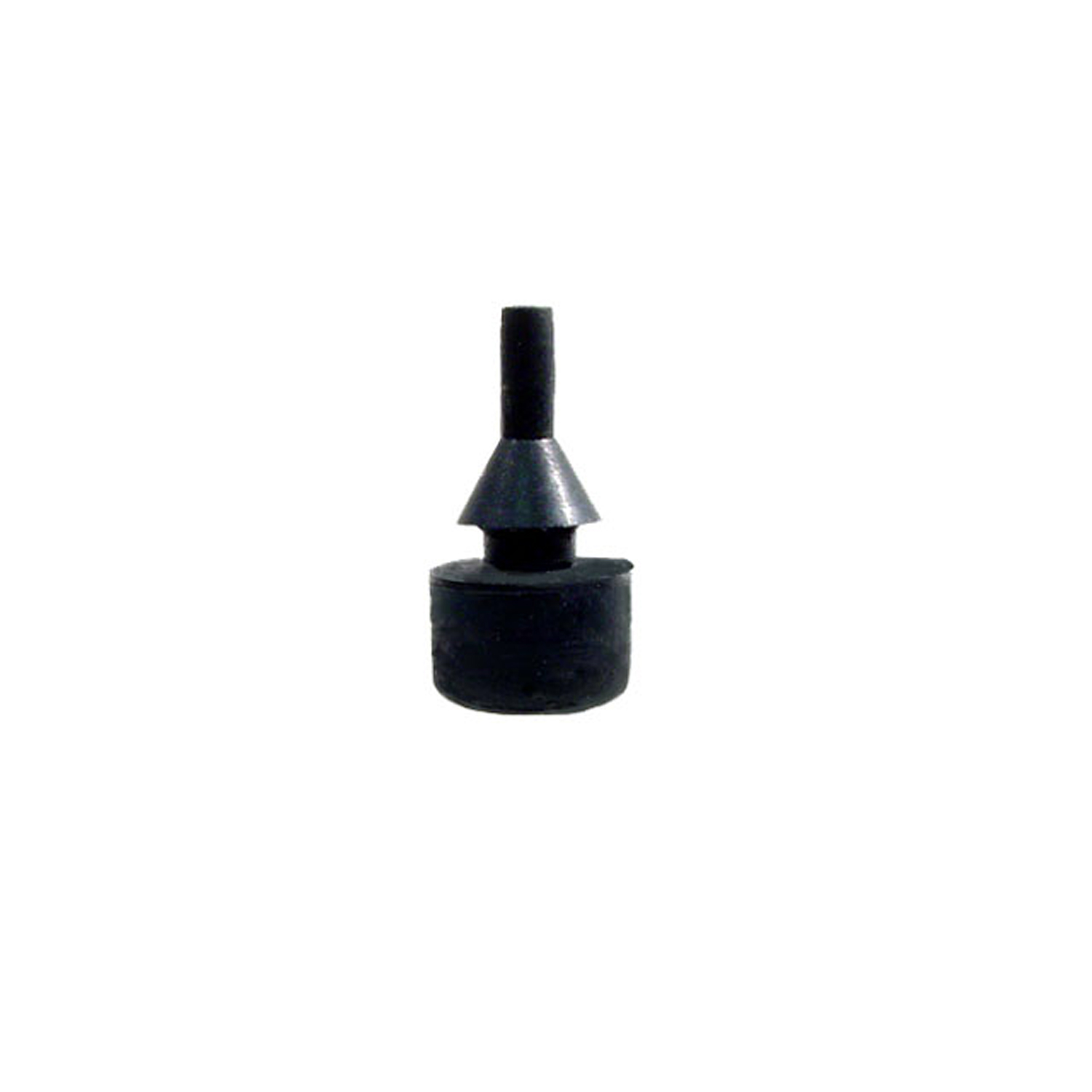 1969 Plymouth Fury License Plate Bumper. 7/16" O.D., fits a 1/4" hole. Each-SB 86License Plate Bumper. 7/16" O.D., fits a 1/4" hole. Each
1969 Plymouth Fury License Plate Bumper. 7/16" O.D., fits a 1/4" hole. Each-SB 86License Plate Bumper. 7/16" O.D., fits a 1/4" hole. Each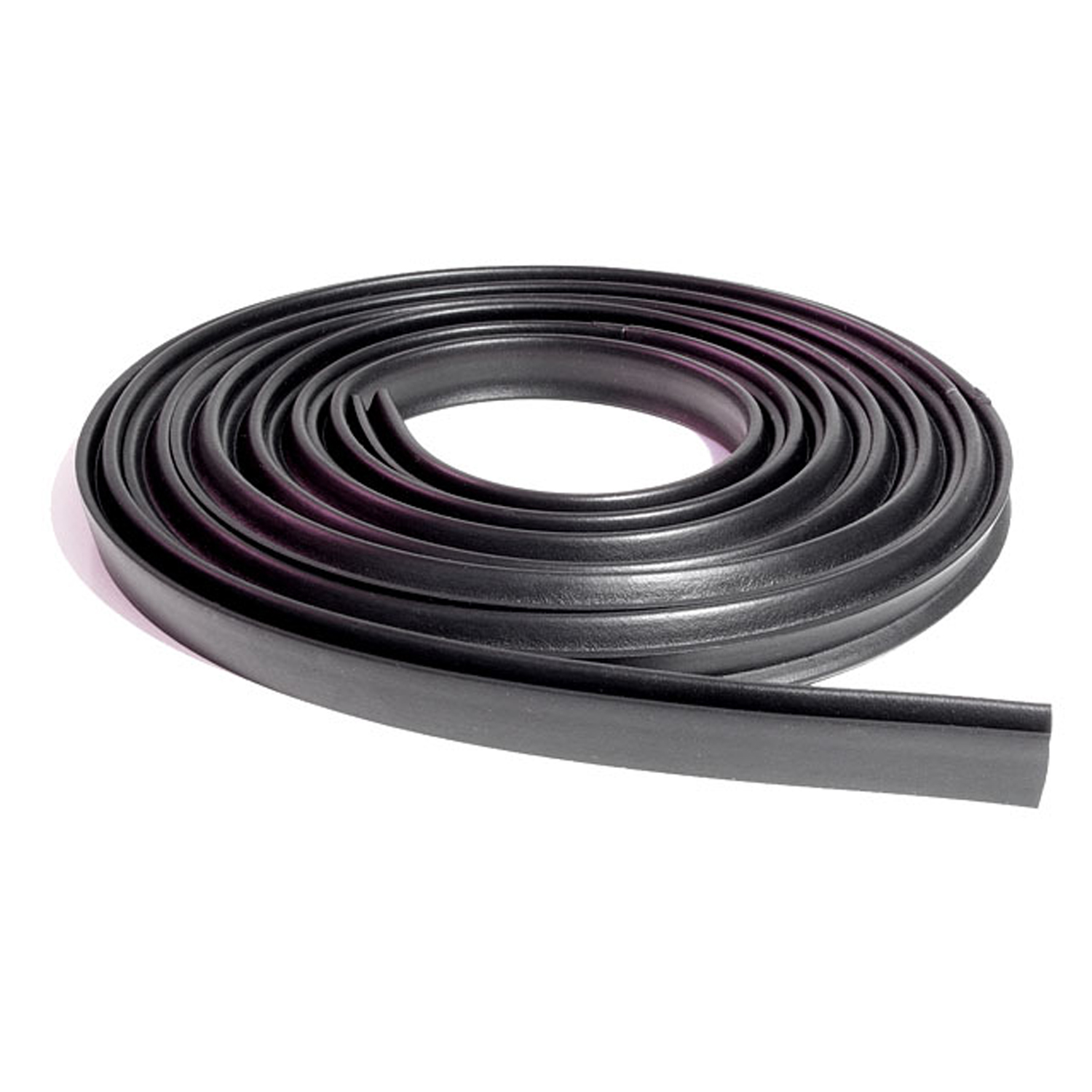 1969 Plymouth Fury Trunk Seal. Each-TK 2328Trunk Seal. Each
1969 Plymouth Fury Trunk Seal. Each-TK 2328Trunk Seal. Each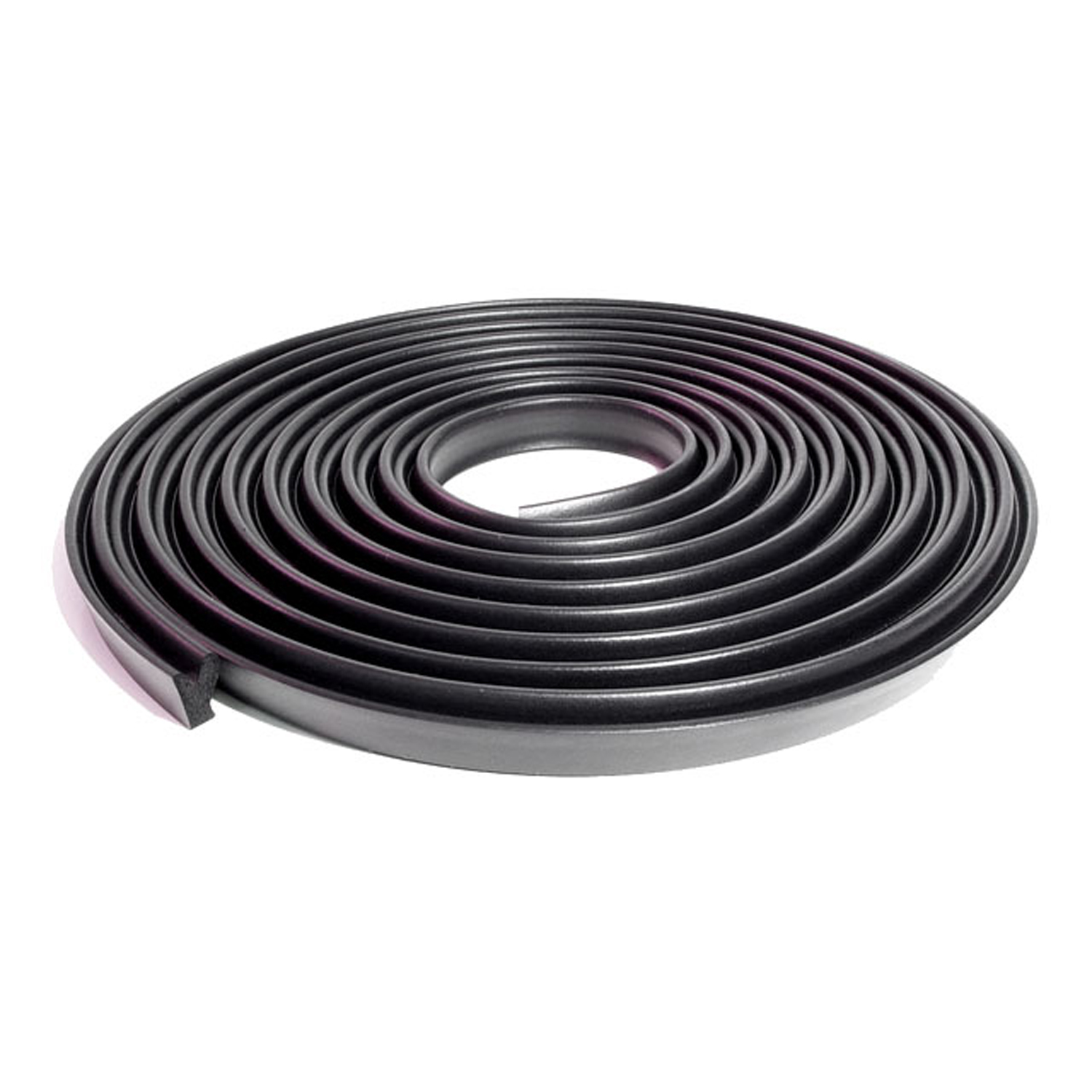 1969 Plymouth Fury Trunk Seal-TK 64-A/18Trunk Seal. For cars with flat (not D-shaped) trunk seal end profile. Each
1969 Plymouth Fury Trunk Seal-TK 64-A/18Trunk Seal. For cars with flat (not D-shaped) trunk seal end profile. Each 1969 Plymouth Fury Nylon Lock Cylinder Gasket. 1-1/4" O.D., 7/8" I.D. Each-UM 2700-104Nylon Lock Cylinder Gasket. 1-1/4" O.D., 7/8" I.D. Each
1969 Plymouth Fury Nylon Lock Cylinder Gasket. 1-1/4" O.D., 7/8" I.D. Each-UM 2700-104Nylon Lock Cylinder Gasket. 1-1/4" O.D., 7/8" I.D. Each 1969 Plymouth Fury Door Weather Strip to Inside Panel Clip-WF 7-DDoor Weather Strip to Inside Panel Clip. Made of white nylon, 3/8" long. Each
1969 Plymouth Fury Door Weather Strip to Inside Panel Clip-WF 7-DDoor Weather Strip to Inside Panel Clip. Made of white nylon, 3/8" long. Each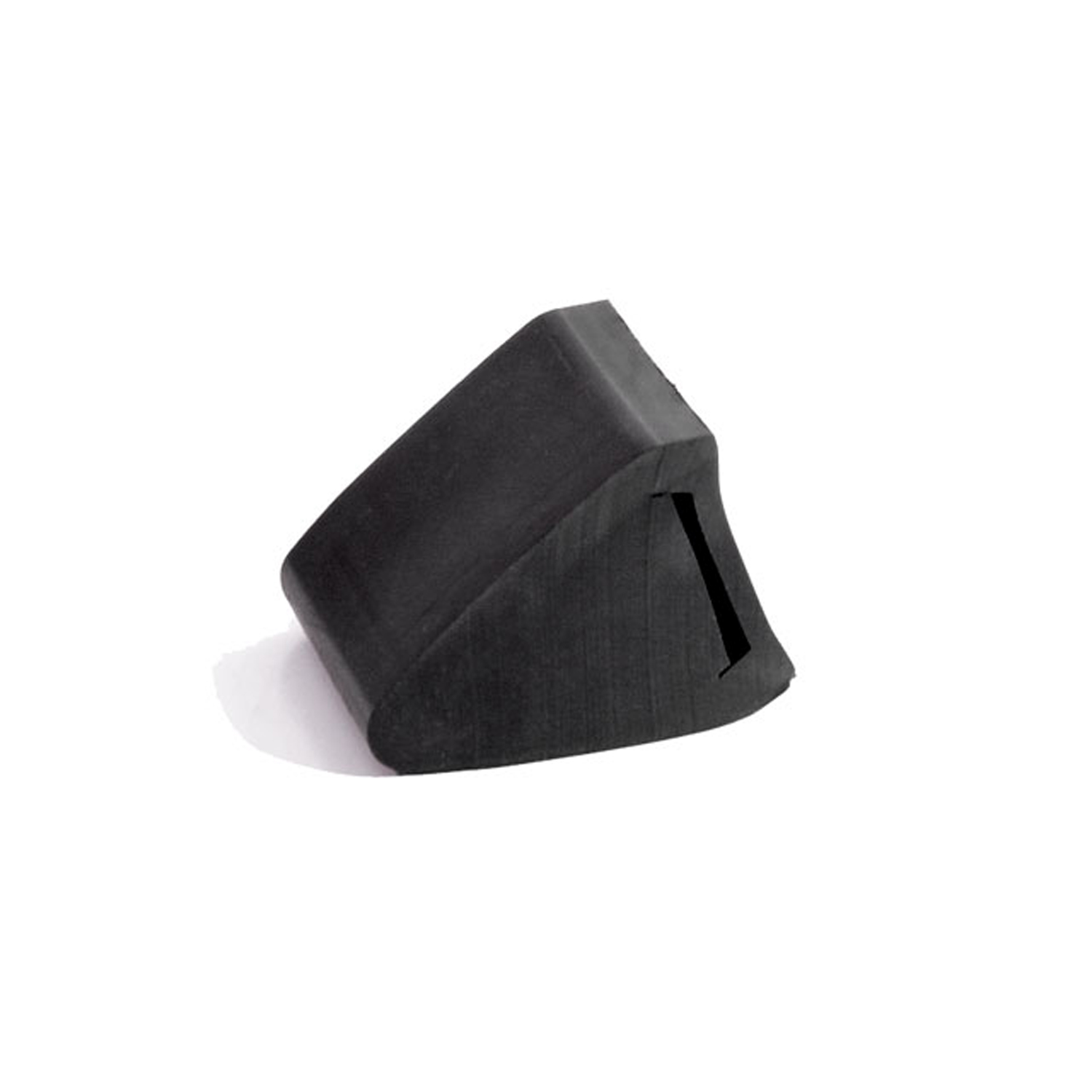 1969 Plymouth Fury Suspension bumper. '62-up Mopar A-, B- and C-body-XB 1Suspension bumper. '62-up Mopar A-, B- and C-body. Fits over the rear axle. Each.
1969 Plymouth Fury Suspension bumper. '62-up Mopar A-, B- and C-body-XB 1Suspension bumper. '62-up Mopar A-, B- and C-body. Fits over the rear axle. Each.Why Choose Metro?
For over 100 years, Metro Moulded Parts has been the pinnacle of quality in classic car restoration parts. Our commitment to precision and authenticity in every component ensures a perfect fit and an OEM-level appearance.
- Expert Craftsmanship & Quality: Each part is a testament to our dedication to reliability and perfection, crafted from original designs and thoroughly tested.
- Advanced Technology: We use cutting-edge techniques to create flawless, long-lasting parts that surpass others in performance.
- SuperSoft Sponge – The Ultimate Door Seal: Not only are our door seals 30% softer than competitors', but they're also guaranteed to never leak. They effectively reduce wind and road noise, enhancing your classic car's comfort and driving experience.
- Proudly American: Our parts are a product of American craftsmanship, made in the USA with a spirit of excellence and heritage.
- Unrivaled Warranty: We back our products with a 30-year industry-leading warranty, a testament to our confidence in their quality.
Join us in preserving the legacy of classic cars with parts that are crafted for perfection, not just made.

